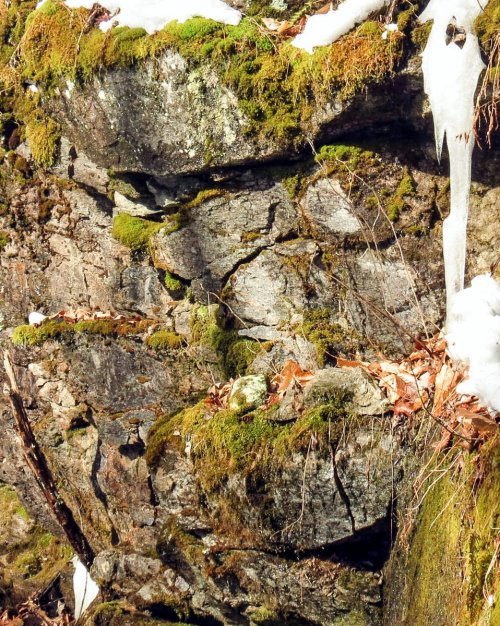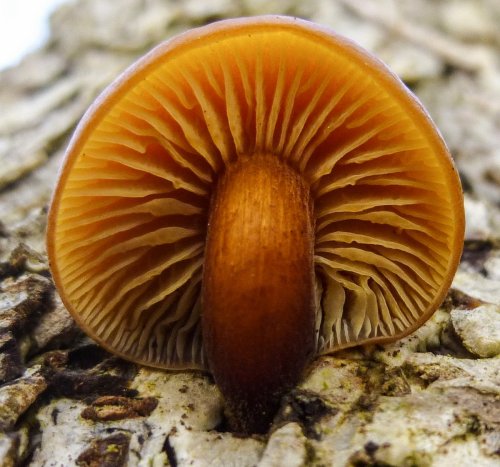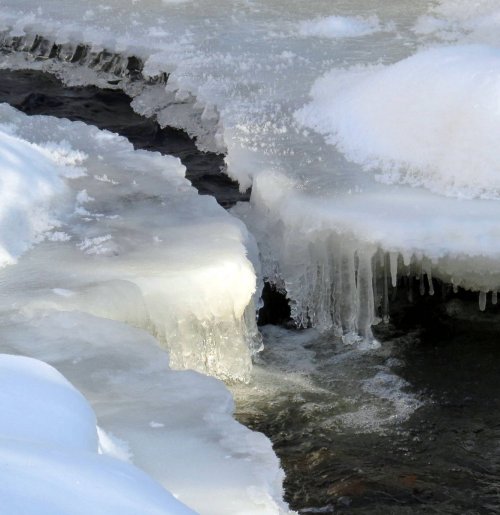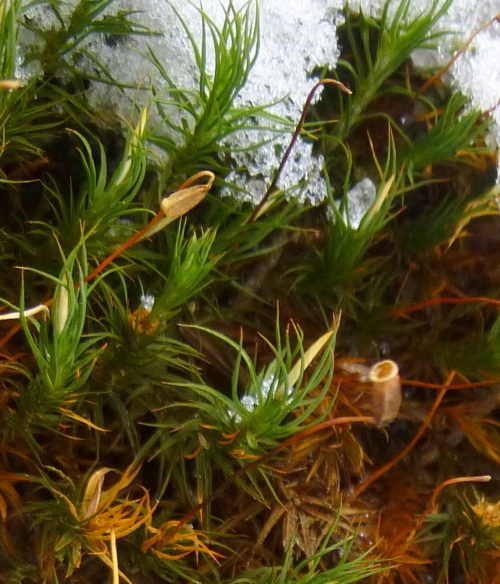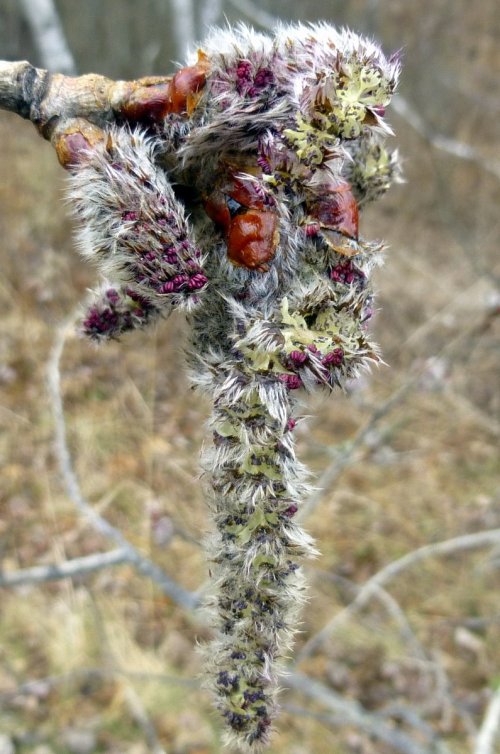Last weekend we had a beautiful warm, sunny Saturday so I decided to visit one of my favorite places, an old railroad cut in Westmoreland that in winter becomes a cold, hard world of ice and stone.
There was so much snow that I wasn’t sure if I’d see any living thing other than trees. I was surprised to find the wind blowing here because the day was calm. It is always at least 10 degrees cooler here than the surrounding area, winter or summer, and now I’m beginning to wonder if the place doesn’t create its own wind as well because, as I think back to previous trips, it always seems to be blowing here.
In the deepest, most shaded part of this man made canyon a group of ice climbers were training. I’ve recently learned that the New Hampshire branch of the Appalachian Mountain Club holds ice climbing clinics here and it looked like that was what was going on. I didn’t bother them and let them have the ice to themselves. Ice was not what I was here for.
Still, it’s impossible to ignore the ice formations. With ice like this it’s no wonder that they come here to train. I saw some rotten ice but I’m sure they know enough about what they do to avoid it.
This is what I came for-to see something green and growing. Mosses, lichens, liverworts and an incredible assortment of ferns and other plants have grown undisturbed in this place for nearly 2 centuries. I think someone could easily spend a lifetime trying to identify them all.
This is a very wet place, with groundwater constantly running down the rock faces, and the mosses love it. This mountain haircap moss (Polystrichastrum pallidisetum) still had a few closed spore capsules (sporophytes) meaning that it’s busy trying to cover even more stone ledges.
This tree that has fallen and spanned the gap is my signal to start looking for liverworts, but as I looked at the ice covered walls it was hard to imagine anything growing in such harsh conditions.
Fortunately in places the sun warms the stone enough to keep the walls clear of ice and this is where many plants choose to grow.
I saw a few clusters of velvet shank mushrooms (Flammulina velutipes) growing on a dying American elm. This is a true “winter mushroom” that fruits from September to March and can live through being frozen solid. When young velvet shanks are ivory colored but age to reddish brown. They are usually dark in the center of the cap and lighter colored toward the edges. These examples were no bigger in diameter than a nickel, but I’ve seen them reach 3 inches.
Velvet shank gets its common name from the velvety feel of its stem, which is lighter near the cap. Jerry from the Quiet Solo Pursuits blog thought of the idea of using a telescoping mirror to see the underside of mushrooms instead of kneeling in the snow. I bought one and it works great but this one was high enough on the tree so I didn’t need to use it. The mirror idea might be good for those who have trouble kneeling.
The first liverwort I saw was the narrow mushroom-headed liverwort (Preissia quadrata). This liverwort can be either male or female, or have can have both male and female reproductive structures on a single plant. Fruiting structures are short, umbrella shaped, spore producing growths that usually appear in March. The examples in the photo were just starting to grow fruiting bodies, which are the 5 or 6 little bumps that can be seen on the body (thallus) of the liverwort. I’ve circled one in white to make it easier to see. These will rise on short stalks before opening like an umbrella. Male reproductive structures will have flat tops and look like small mushrooms and females will look like tiny palm trees. I hope to be there to see them.
The snakeskin liverwort (Conocephalum conicum) reproduces in much the same way as the narrow mushroom-headed liverwort, but I didn’t find any getting ready to do so just yet. This is also called great scented liverwort and I remembered to smell it this time. I was astonished by its fresh, clean scent that immediately reminded me of air fresheners. It was kind of lemony, kind of spicy, but in the end impossible to accurately describe because I’ve never smelled anything exactly like it. It’s another interesting facet of an interesting and very unusual plant.
Wild strawberry (Fragaria virginiana) was a plant I didn’t expect to see growing on these rocks in February but there it was, still attached to its parent by its runner (stolon).
It looks like the old lineman’s shack is going to make it through another winter even though half of the roof, most of the floor, and most of the siding boards are gone. Many were taken to be used as bridges across the drainage ditches on either side of the rail bed and they can still be seen here and there along the trail.
I don’t know when it was built but according to the graffiti on its back wall the shack will see at least its 90th anniversary next year. My father was born and grew up in this town and I can’t help but wonder if he ever saw the inside of this building. He was 18 in 1925.
It’s going to be a while before all of the ice has melted in this place but spring is happening, even here.
There is beauty, heartbreaking beauty, everywhere. ~ Edward Abbey
Thanks for coming by.



